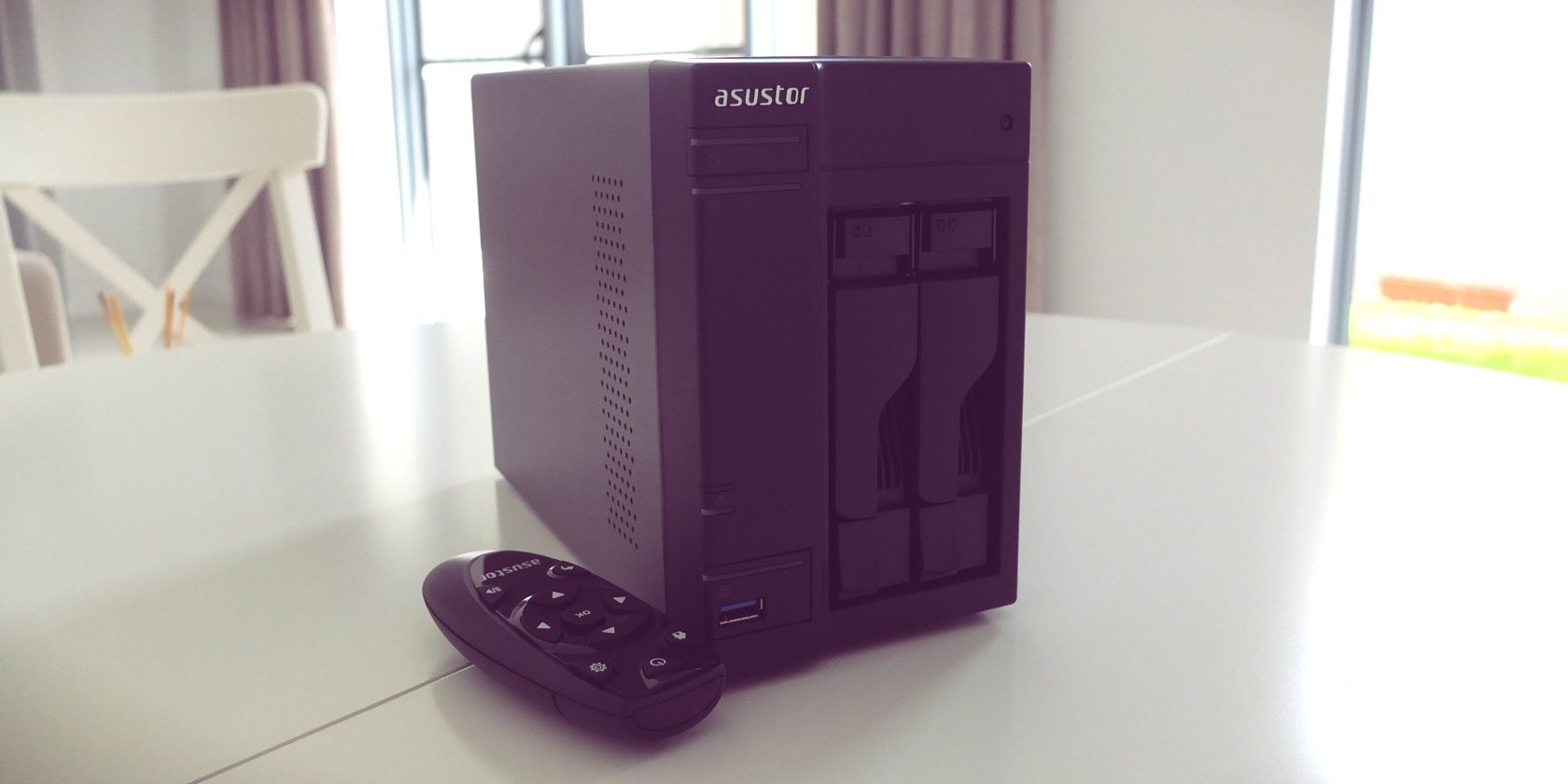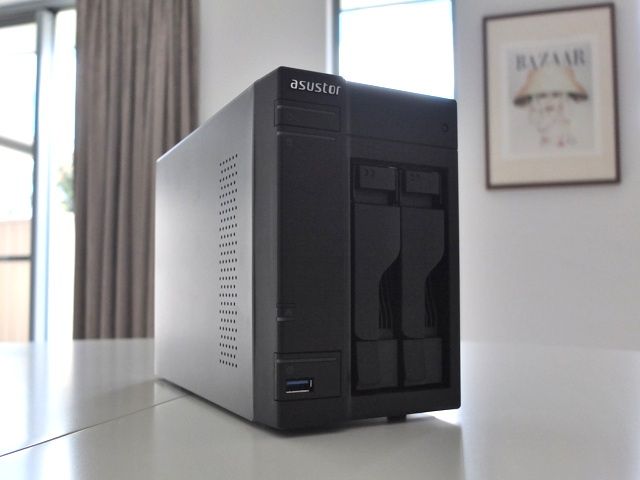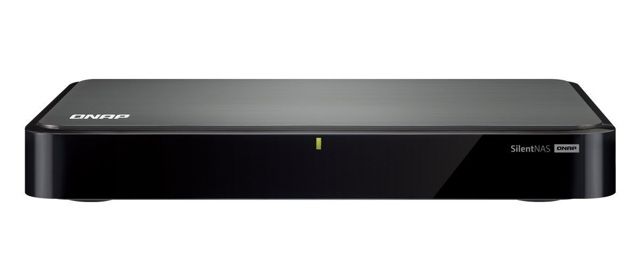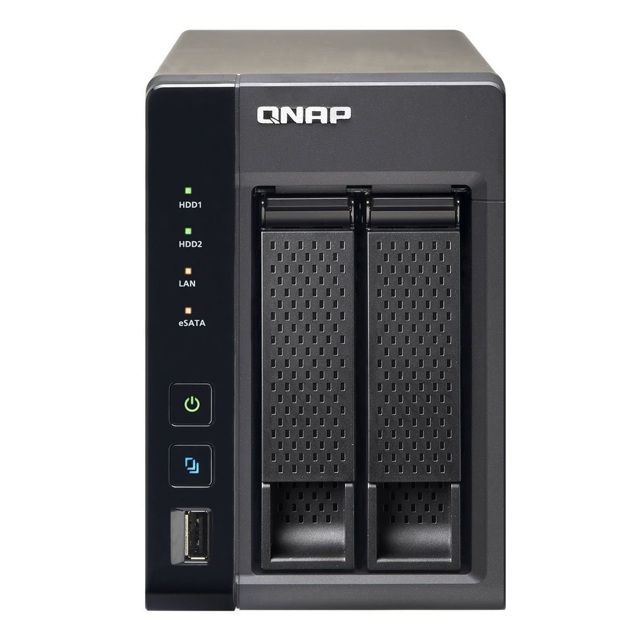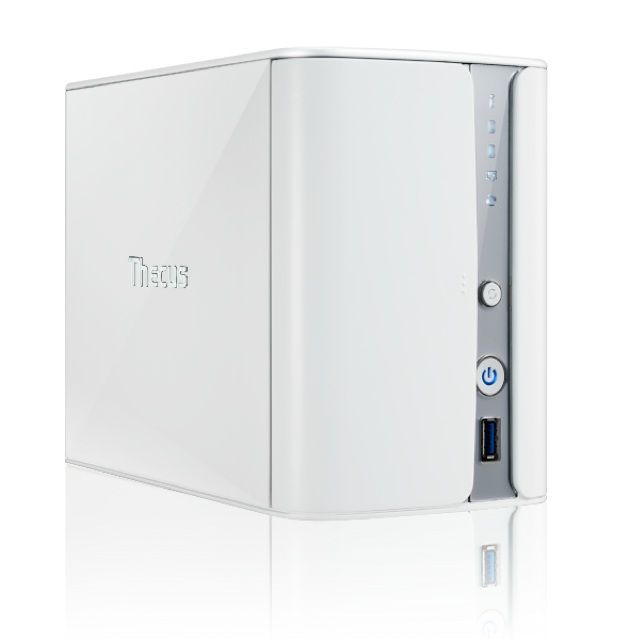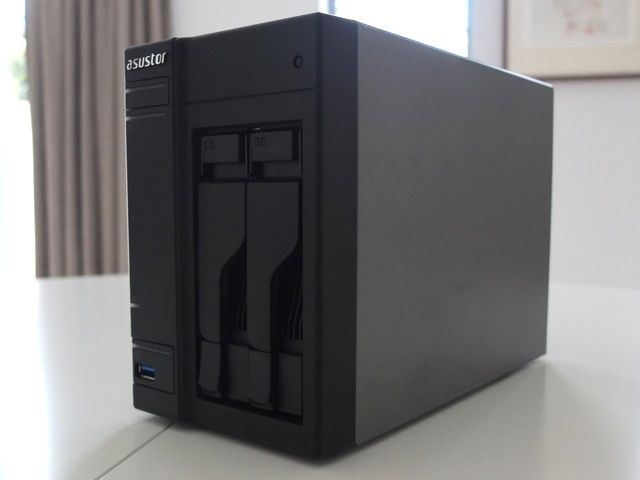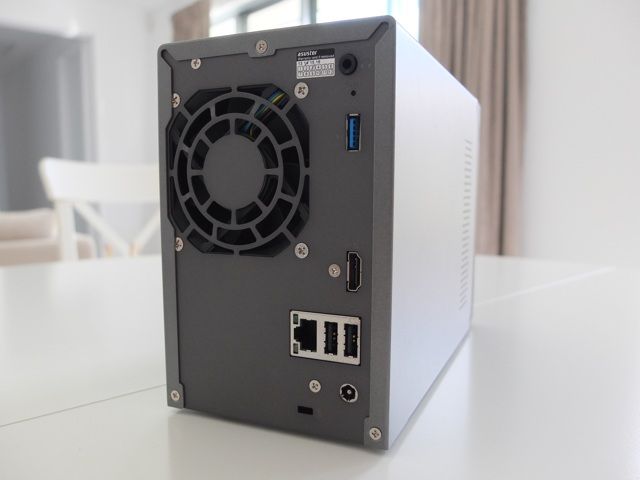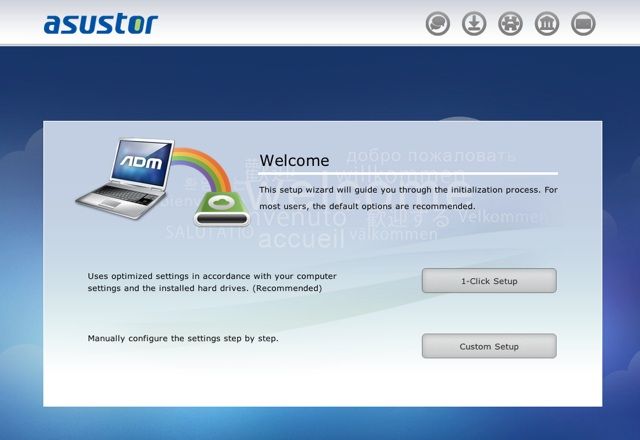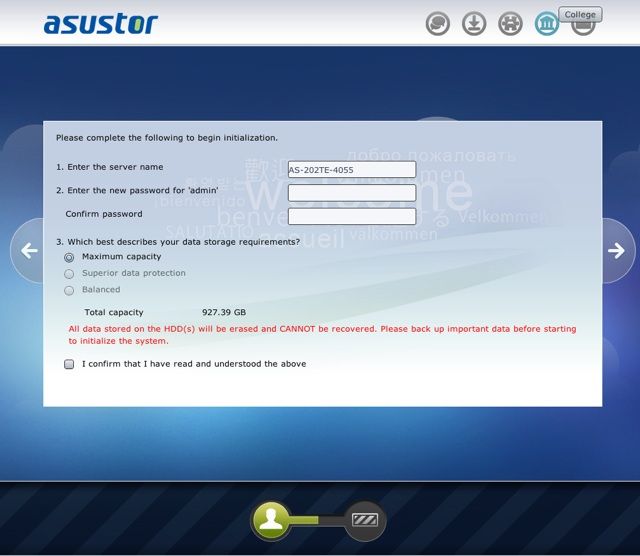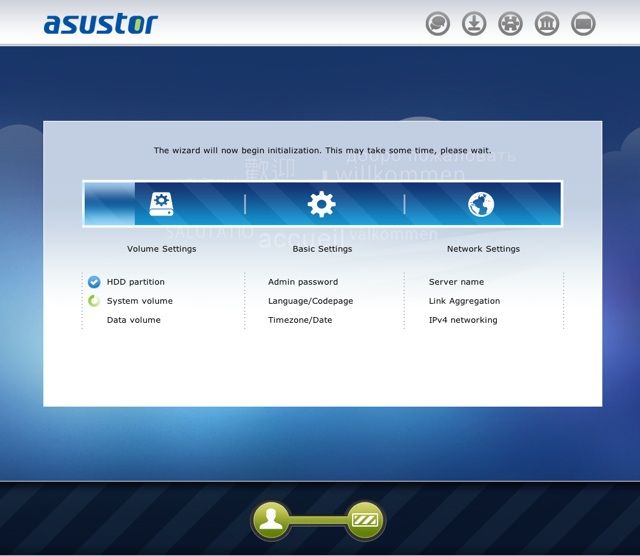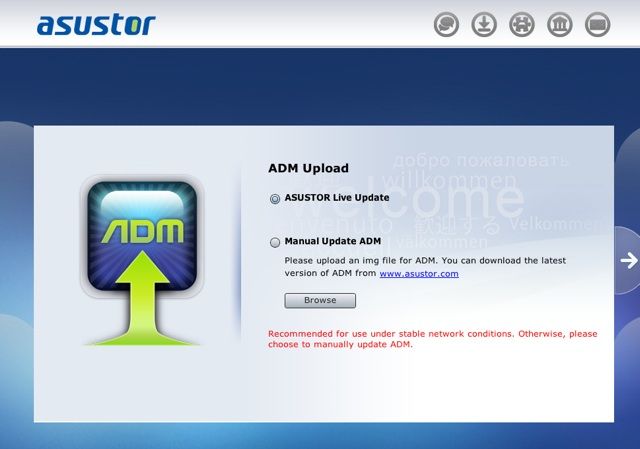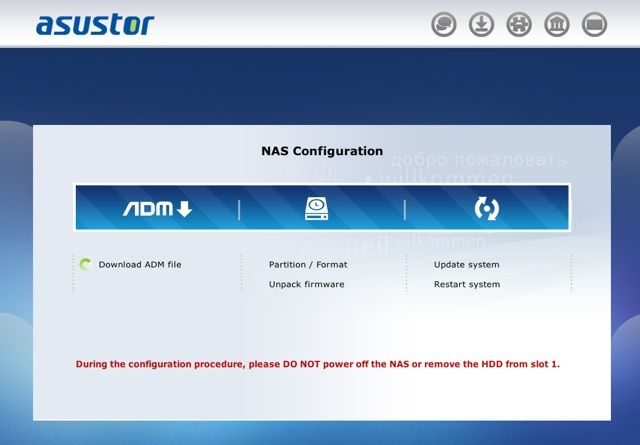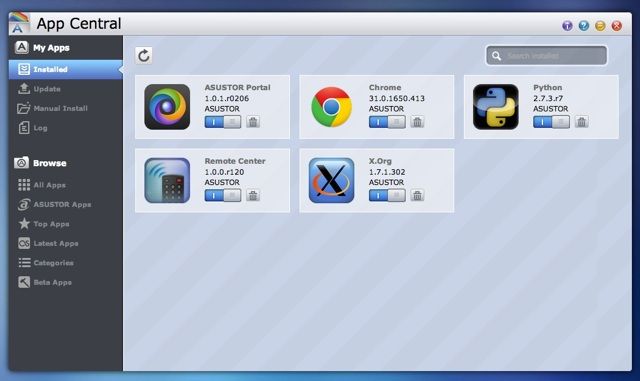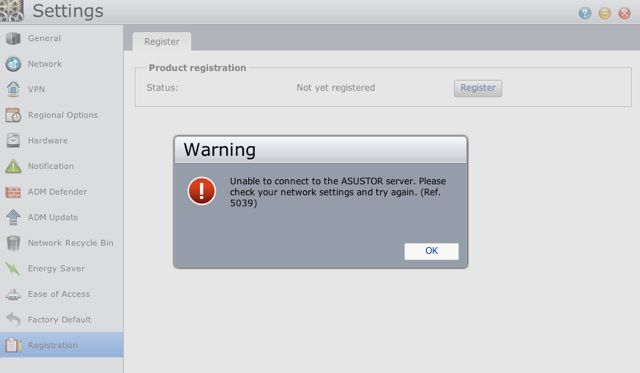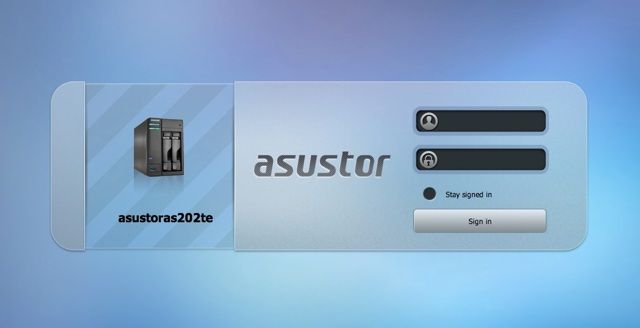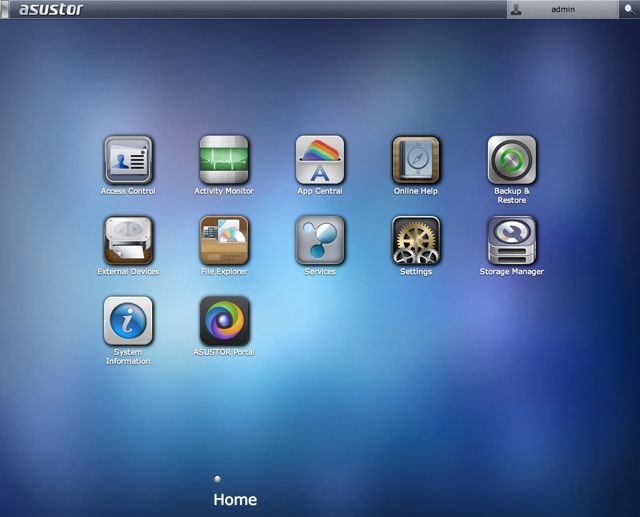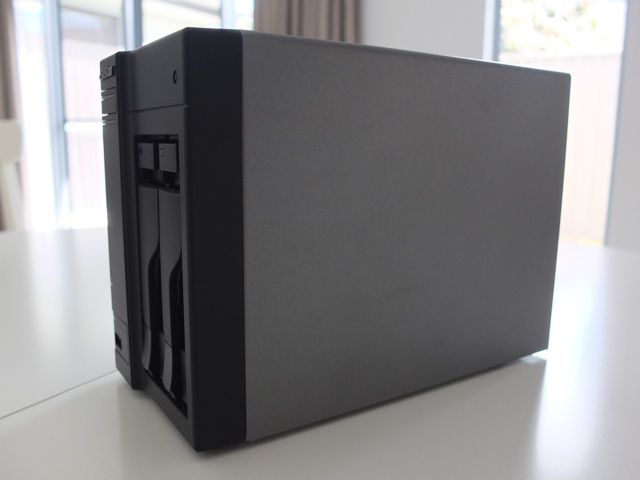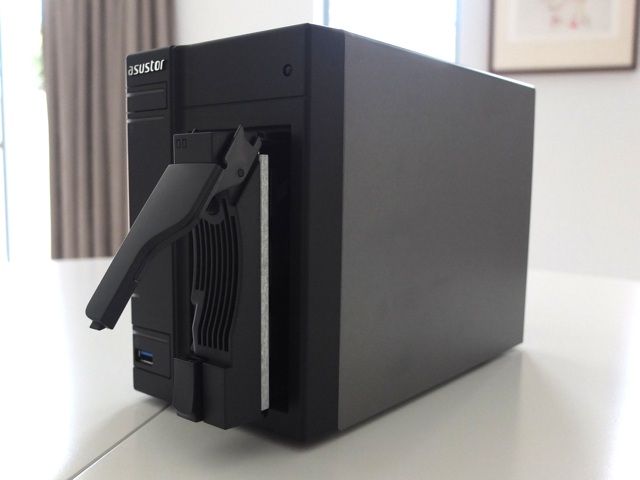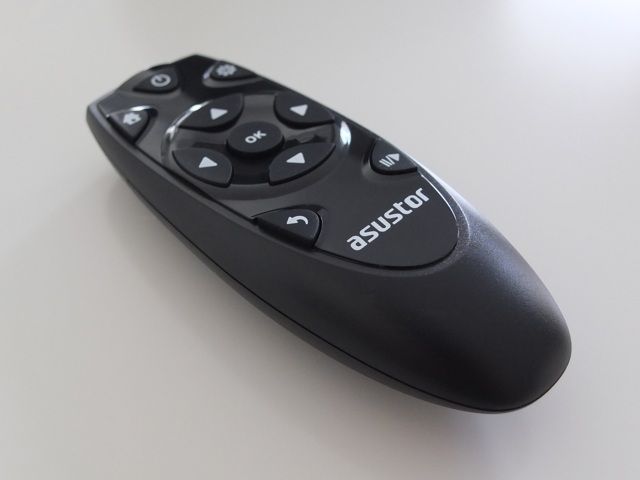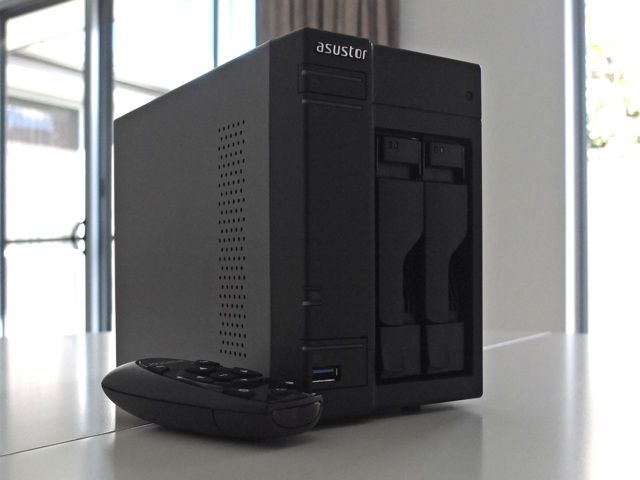Asustor AS-202TE NAS
Every perfect home media center needs a network attached storage. How else are you going to store your favourite TV shows and movies?
We've looked at several NAS devices in the past, but none function quite like Asustor's AS-202TE. Built with multimedia in mind, this 2-bay network attached storage has two very unique features that lift it up over its competition: HDMI connectivity, and IR remote support. Does this mean that you can use the AS-202TE as a media streamer and player without the need for a set-top device or home theater PC? There's only one way to find out. Let's take a look.
We'll also be offering this $250 2-bay NAS device up for grabs. So if you're in need of storage, read on and join the competition!
Introducing the Asustor AS-202TE
Personally, I mostly use NAS devices to store media locally, and stream them to my living room media center, or any computer around the house. I suspect I'm not alone -- network attached storage devices are quickly becoming very affordable, and provide users with the freedom of connecting to them through their home network; unlike a wired external hard drive.
I might take a leap of faith and call the AS-202TE a pioneering device. With HDMI connectivity, it spares the user from purchasing a separate media player like the Roku 3, Roku Streaming Stick, or Apple TV. Not even a computer is required to act as a HTPC media center -- essentially cutting out the middleperson and saving you some money. With the optional $32 remote control, it's aims to provide an authentic media theater experience.
But is it unique?
Put simply, no. A wave of multimedia-centric network attached storage device hit the market recently, all sporting HDMI connectivity and IR remote support. Most notable of which is QNAP's fanless 2-bay HS-251, which looks like it actually belongs on your entertainment console. I had the privilege of testing this device at Computex '14 in June, and it looked very promising. The fact that it's fanless is a plus -- I prefer silent operation over fans whirring any day, especially when I'm kicking back to a movie. The only drawback is its $550 price tag, and that's not including hard drives. Ouch.
QNAP also offers a more conventionally-styled NAS device with HDMI connectivity, the TS-269L. It's tower design looks a bit like the Asustor AS-202TE, but that's as far as the similarities go. It features a slightly more powerful processor, more Ethernet and USB ports, and an eSATA port. However, it also costs $80 dearer than the AS-202TE.
Lastly, there's also the Thecus N2560, which honestly looks rather good in white. But it's not available on Amazon yet, and if it runs the same operating system as the N2310 unit we reviewed, I'd advise against it.
So compared to its competition, the AS202-TE actually makes a lot of sense. Although it doesn't have the best components or look the sleekest, it's the most affordable. For the budget-conscious buyer, the AS202-TE is probably the ideal NAS device for a home media center.
Design and Specifications
I have to be honest, it's not the prettiest product. The AS202-TE was designed very conventionally -- a tower with two pull-out drive bays at the front, and a couple of horizontal LED indicators. Possibly a quantum leap in styling exhibited by the thin horizontal LEDs, but otherwise, its grey and grey colour template doesn't quite ooze sophistication. I guess it helps to blend in with the rest of the devices on the entertainment console. Without any drives, the AS-202TE is surprisingly light -- or perhaps I'm too used to handling 4-day NAS devices. It stands at 163.5 x 108 x 230 mm and weighs just 1.87 kg diskless.
For the asking price of $250, I wouldn't expect top-of-the-line components from the AS-202TE. Luckily, the included hardware aren't too shabby either: it features a 1.2GHz dual-core Intel ATOM processor and 1 gigabyte of memory, whereas most 2-bay NAS devices (and even some 4-bay units that I currently own) only provide 512MB. There are also two SuperSpeed USB 3.0 ports (one in front, and the other at the back), two USB 2.0 ports, one gigabit Ethernet port, one HDMI 1.4 port, a 3.5 mm audio out port, and an infrared receiver at the front.
Since it can only house two drives, the AS-202TE supports single disk, JBOD, RAID 0 and RAID 1 drive volumes. However, it can read external drives formatted FAT32, NTFS, EXT3, EXT4, or HFS+ connected through USB. Technically, it can achieve a maximum internal storage capacity of 8TB through two hot-swappable 4TB drives striped with RAID 0.
Not only can you expand its storage through external USB drives, the AS-202TE also supports USB Wi-Fi dongles (so you don't need to be restricted to wired connections), Bluetooth dongles, printers, keyboards, mouse, and digital-to-analog converters -- all through USB.
In the box, Asustor also provided the AS-202TE's power supply unit, a Getting Started CD, some screws to attach the drives to the trays, and a network cable. Looking at the mountain of free network cable I've amassed, I would have prefered a HDMI cable instead. It would've been more fitting, seeing as HDMI connectivity is its main selling point.
Setting Up
You'd think that if a NAS is capable of connecting directly to a TV through HDMI, setting up wouldn't require a computer, right? I thought so too. So I popped in a drive into one of the two bays, connected the HDMI cable, powered on the device, and waited. Nothing. I could hear the hard drive spinning and reading, but nothing appeared on the television. After waiting for about five minutes, I decided to investigate. It turned out that despite the fact that the AS202-TE has HDMI connectivity, no signal was relayed to the television if the NAS hasn't initiated. There was no other way around it, I needed to connect to it through a computer in order to set it up.
Much like every other NAS I've tested, setting up is a process which involves downloading the latest firmware, or operating system, partitioning the drive(s), unpacking the firmware and restarting. Typically, it takes about an hour to perform, depending on the size of the hard drive. In my case, I tested the AS202-TE with a single 1TB Seagate hard drive.
My First Hurdle: HDMI Output
Surprising, the AS202-TE managed to initiate pretty quickly. Downloading the 100MB firmware file -- called Asustor Data Master (ADM) -- took roughly 10 minutes from their painfully slow server. Luckily, the rest of the process -- partitioning the drive and setting up a user -- happened in a blink of an eye. I was logged into the NAS, yet strangely, I still couldn't get the HDMI output working properly. My intuition directed me to explore the settings panel but I couldn't find anything related to video output. Next, I decided to try the applications repository, App Central.
After a few minutes of browsing the App Central, I concluded that I needed to install ASUSTOR Portal. So I gave it a go, but was slapped with another obstacle. It appeared that registration is required in order to download applications from the App Central repository. Clicking on 'OK' just brought me to the registration page where I was hit with yet another error (Ref: 5039) which prevented me from registering. Not the best first impression, if I'm honest. After some research on support forums, it turns out that the device's DNS address fields mustn't be blank. So I entered the infamous Google DNS, managed to register, signed in, downloaded ASUSTOR Portal, and bingo -- finally, the display showed up on my television.
I've reviewed several network attached storage devices and none of them was ever as difficult as the AS-202TE in terms of getting started. It took me a solid hour to decipher the cryptic error messages and get the HDMI connectivity up and running. I wished it would all work out of the box.
ADM
Asustor Data Master, otherwise known as ADM, is the Linux-based operating system that provides the user interface for the network attached storage. Bearing a slight resemblance to iOS, the icon-driven interface is accessible through a web browser, and is fairly responsive. Unlike Synology's DSM, ADM doesn't have that traditional "desktop" feeling. Instead, ADM takes a mobile-style approach to presenting applications by spreading them out as icons across home pages.
It's fairly easy to use and navigate around, but at times, can feel unrefined. It's a matter of placement: I was searching for the scheduling option to turn the NAS on and off at specific times. So naturally, I dove into the 'Energy Saver' settings panel, but it wasn't there. Instead, I found it in the 'Hardware' panel, under the 'Power' tab.
ADM offers a heap of features -- too many to mention individually. Most aren't quite unique (surveillance monitoring systems, music streaming services, torrent clients, content management systems) and are commonly found on many network storage devices. However, since the main selling point of the AS-202TE is HDMI connectivity, it offers XBMC as the platform to enjoy movie files stored on the NAS. Interestingly, it also supports the Chrome browser, which can be an incredibly useful addition. Chrome functions as a bridge between being a NAS and media center, since it hopes to replace the HTPC or set-top device -- both of which would normally include some sort of web browser. The fact that it has a Chrome browser enables the user to not only browse the Web, but also (theoretically) enjoy online media streaming services like Hulu and YouTube (Netflix isn't supported), without depending on applications.
Built For Entertainment
As I've probably mentioned several times in this review, the AS-202TE was designed as a media center NAS. Being able to directly output video to a television, it eliminates the need for a separate set-top device or computer. Using XBMC to deliver media, and paired with the optional IR remote, or a compatible MCE mouse and keyboard, the AS-202TE is unchallenged in terms of simplicity of setup. In theory, that is.
There's a bit of manual manipulation involved in getting the entertainment aspect going. First, the user would need to download XBMC from App Central (and Remote Center, don't forget that), establish a "Media" shared folder, and copy the movies and TV shows over. Once that's done, Turn on the television, fire up XBMC and enjoy. At least, that's the idea.
The truth is, the version of XBMC from App Central is outdated (Frodo) and is plagued with an audio sync issue, similar to the the VidOn.me player I reviewed a few weeks ago. Aside from that, I was pretty pleased in terms of performance. The benefit of hooking the NAS to a television directly through HDMI is the complete absence of network lag. Videos start playing immediately and seeking is instantaneous. It's wonderful -- goodbye, buffering.
Navigating ASUSTOR Portal -- the TV interface -- using the optional IR remote control is fairly easy. In fact, the interface accepts input from a USB or MCE mouse and keyboard, which further enhances the experience if you dislike using the remote control. Alternatively, Asustor developed a series of smartphone apps, one of which is called AiRemote and enables you to control the interface from an Android or iOS device.
The optional IR remote itself is a convenience -- there's no tinkering involved, and it just works. Pressing on the buttons result in a satisfying click, and it feels good in my hand. My only complaint is that the battery cover is excruciatingly difficult to release.
Worth mention is of course, the Chrome browser. The idea behind providing Internet access and elevating the AS-202TE from just a NAS to becoming an all-rounded leanback experience, is just fantastic. To fully utilise the Chrome browser, you'd need to either connect a keyboard and mouse, or use AiRemote -- it doesn't work with the IR remote, as there isn't an on-screen keyboard. During testing, I loaded Hulu Plus, Netflix and YouTube -- and the results were less than ideal.
Let's first get Netflix out of the way -- it doesn't work, at least not out of the box. ADM is based on Linux, and as such, requires Pipelight and Silverlight for Netflix to operate, along with a user-agent switcher.
Hulu and YouTube videos can be streamed, but with horrendous screen tearing, making the videos completely unwatchable. I'd recommend using XBMC with a suitable add-on.
Should You Buy The Asustor AS-202TE?
The AS-202TE certainly does have potential to be the ultimate media center device. The addition of HDMI output on a network attached storage device is brilliant. If it wasn't for the audio sync issue in XBMC, I'd say it could replace my current media center setup.
As a NAS, the AS-202TE performs as expected. It's hot-swappable 2-bay configuration is sleek with a small footprint. ADM is a minor let-down, as it's still slightly under-developed at this point, especially compared with Synology's DSM, but its affordability more than makes up for it. As for the other software issues, I hope the developers at Asustor will address them swiftly -- right now, they dampen the entire experience.
[recommend]MakeUseOf recommends: Great as a NAS, not quite ready to take on media functionalities.[/recommend]
How Do I Win The Asustor AS-202TE?
For mobile users, click here to enter.
The winner will be selected at random and informed via email. View the list of winners here.
Send your products to be reviewed. Contact Jackson Chung for further details.

